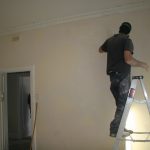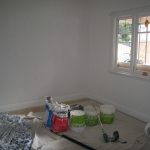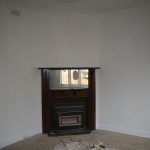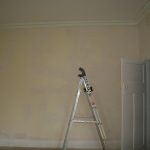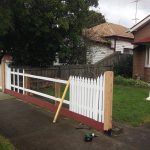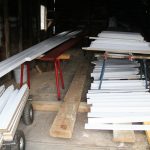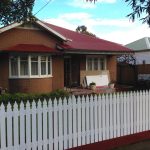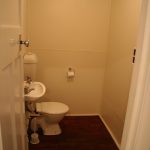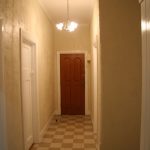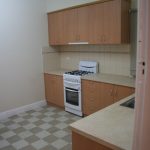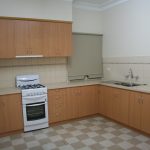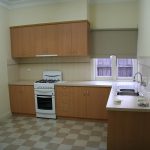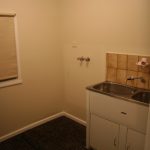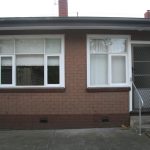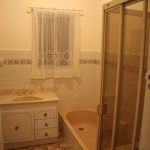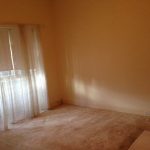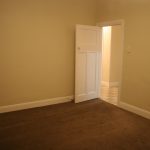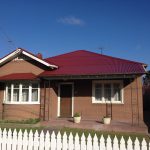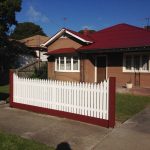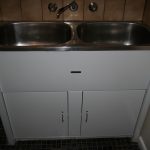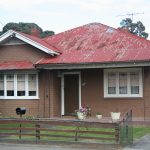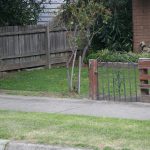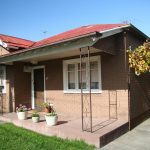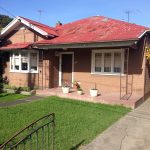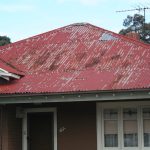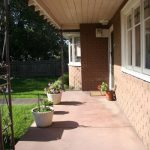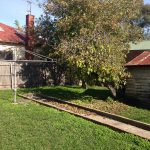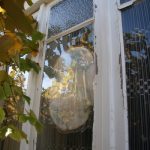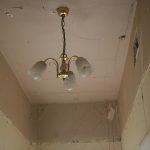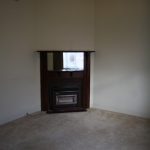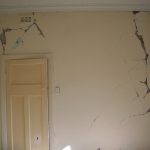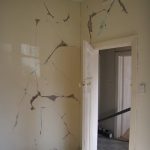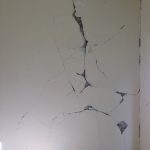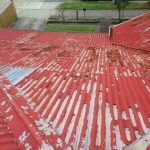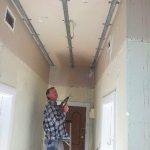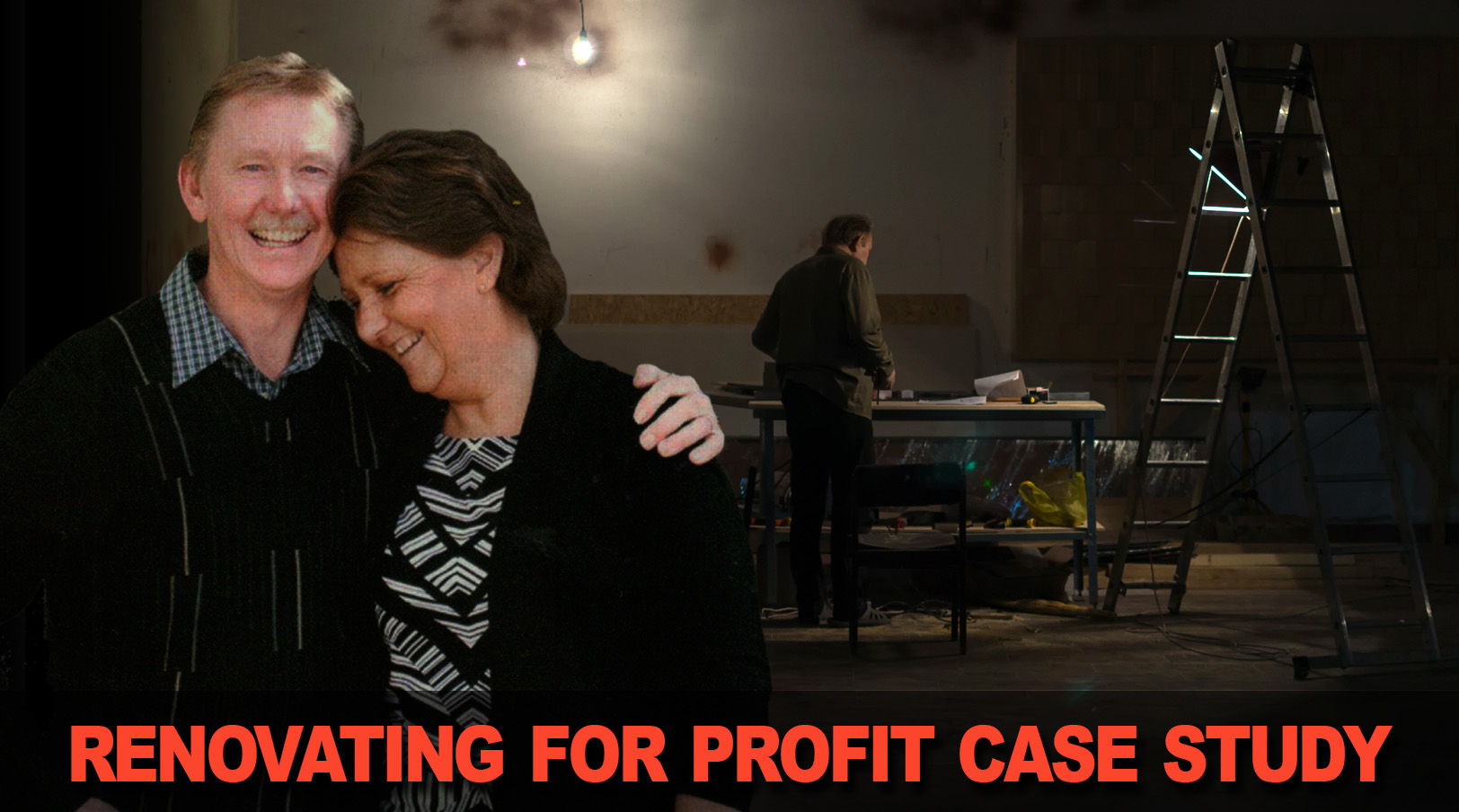
Ep 04: Real Life Renovation for Profit
$25,000 profit from a 16 day renovation! “We are on fire!!!”
For Russell and Heather from Victoria, the jump into becoming successful property investors took some time, over 25 years in fact… In today’s episode we explore their breakthrough strategic renovation in Melbourne and hear valuable tips for investing faster using renovation…
SHOW NOTES
- Meet our episode guest, Russell [1:40]
- A practical application of the Trident strategy [2:35]
- How a change in mindset played a crucial role in taking action [3:18]
- On location: Russell on choosing the suburb and property [4:35]
- The Dot Map and the other criteria Russell used in choosing a property [4:50]
- Russell’s first impression on the property and how he underwent an attitude re-adjustment. [5:50]
- The ups and downs of the offer process [7:30]
- How the local industry in an area affected the value of a property [9:06]
- The property inspection and work that needed to be done [11:00]
- DIY to save costs and knowing when it is time to hire for help [13:00]
- Walkthrough inside of the house and description of work carried out [16:30]
- How to use a false ceiling to cover cracks [17:11]
- Restumping a floor that was damaged by a water leak [18:40]
- How to deal with lath and plaster [21:21]
- Renovation decisions on a dated bathroom [24:15]
- Russell shares how they finally got their first investment property and what prevented them from doing it sooner [29:11]
- The fears and the worries that prevented Russell from taking action [29:50]
- The tipping point [30:25]
- How educating yourself first plays a crucial role in your property investment journey [30:55]
- The figures! [33:00]
- How low vacancy rates help in acquiring tenants faster [36:00]
- Ray’s advice for someone starting out today [36:55]
- Jane and John recap [37:30]
We look, never commit. We were just too scared to do it.
– Russel Berndt
Enough is enough. We’re going to change and we’re doing it now.
– Russel Berndt
I don’t know what I was scared of before, but now we’re ready to get a go on it again. We’re on fire!
– Russel Berndt
RESOURCES AND LINKS
- Russell and Heather renovation feature in API magazine
- Description of Lath and Plaster on Wikipedia
ALSO MENTIONED
- Jane’s renovation case study in Australian Property Investor Magazine (August 2016)
TRANSCRIPT
Your Property Success Podcast Transcript
Episode 04: Real Life Renovation for Profit
John Blackman: Did you know with just two investment properties and one single renovation that you could put over a million dollars in the bank? It’s true and why stop there? Welcome to Your Property Success Podcast, the show that explores the practical steps to making your property investment dreams a reality.
And now, here’s your host, a lady whose handbag contains a current license to drive a 250-ton truck: Jane Slack-Smith.
Jane Slack-Smith: That is true. I do have a license to drive a 250-ton truck.
John Hubbard: And that’s because you drive trucks in your spare time?
Jane: No, no. Actually, I’m probably up for a revision of that license, but I’ve got a license to drive trucks and draglines and…
John: Well, how big is a 250-ton truck?
Jane: Well, you could park a Ford Ute into the bucket
John: So this is one of the big tippers that tips
Jane: –big tippers, and if you stood next to it, your hard hat would probably come up to the top of the rim. And, yeah, pretty expensive. If you have to change a tire, about $10,000 each. So, very big and lots of fun to drive. In actual fact, they’re so big they pretty much drive themselves.
John: Still pretty impressive.
Jane: It is, it is. But enough of all that. So, we have a very exciting episode coming up today, which is another first for our little podcast. Now you may remember in episode 1, we talked about wanting to incorporate not only theory but also real practical information on property investing. And this week, John, you’ve been out and about with your microphone to bring us our very first case study.
John: Yeah, I have. I’ve been speaking to this guy.
Russell: Hey, John. My name is Russell and currently a maintenance manager of a theme park out in Whittlesea, and this is my first renovation.
John: Yeah, so very first renovation project for Russell and his wife Heather. And you may have even read their story. They’re in API, Australian Property Investor Magazine at one point, last year, after they finished this renovation.
Jane: Look, I love this story and I know just how helpful stories are and how they can really help people. Because I know when I was starting out over 15 years ago, I couldn’t get enough of stories like this, and I shared that in the second podcast with Jan Somers. I really loved her book when she was actually sharing the case studies as well.
John: The Story By Story book.
Jane: And to see what people have done and how they did it, and you know, these things are a really great shortcut and allows you to put the pieces in the jigsaw together a lot faster. Because it’s so important to get it right the first time, why not learn from someone else’s mistakes?
John: Yeah, absolutely. I think this case study is a really great example of you Trident Strategy, because Heather and Russell, purchased under market. They renovated their property to add value and they chose an area with good predicted capital growth. So you’ll hear all about that and also some of the other criteria of their views, which is very much along the lines of what you heard in the first three episodes and the result was they made $25,000 in a 16-day renovation, and over and above that; it’s just the fact that this has now just set them up to build a property portfolio.
Jane: Wow! Creating over a thousand dollars a day is not hard work, is it?
John: No, it’s pretty good going.
Jane: But it wasn’t all smooth sailing, I understand.
John: No, it wasn’t. In fact, it pretty well required a complete transformation and mindset to even get going, so just have a listen to this.
Russell: We’ve talked about investing for 25 years and we do all the right things. We look, never commit, because once we get to that point, it’s, “What if something happens? What if you lose your job? What if you run out of money? Something goes wrong…” and you end up with nothing, which is not the case, but we had every reason not do, so we would just handbrake and are too scared to do it.
Jane: Yes, and this is something that holds so many people back: overcoming those fears of taking action. In Episode 2, Jan Somers shared a story about the three frogs and the lily pad. She said three of them decided to jump, so how many were left? There were three left. Three? Because they only decided to jump. There’s a big difference between deciding to do something and actually doing it. But worst of all is not starting it at all because it’s never too late to get started. It doesn’t have to be perfect. That’s why I think today’s case study has so many lessons for all of us.
So folks, let’s take a journey together with Russell on our very first case study.
John: So we’re in a residential street north of Melbourne, a few cars going past. Where are we, Russell?
Russell: We’re just 7k from the CBD on the border of Thornbury and West Preston.
John: Okay. So, before we talk about the house itself, what made you choose this area?
Russell: Well, I did Jane’s dot map in the northern corridor and I wanted to be as closest to Melbourne as possible. I had a different criteria, like the yield, the growth over the last 10 years and where its project growth was, and ultimately, where we could afford. I actually wanted to go Reservoir, and West Preston was a little bit too out of our range for money. Yeah, we were looking in Reservoir initially.
John: And what changed?
Russell: My wife said to me, “Look, I found a house in West Preston that we could afford,” and I thought, “Terrific. We’ll go and have a look.”
John: All right, so you rode up here at the front of the house here. What was your first impression when you arrived?
Russell: Well, we drove past and we parked next door and as we just slowly went past, she said, “There’s the house” and I thought, “You’ve got to be joking.”
John: Why?
Russell: It was a wreck. It was an ugly brick-clad old clunker with a broken-down front fence, rusted roof, overgrown bushes. It looked horrible, and I thought, “You’ve got to be joking.” She said, “Well, that’s exactly what you asked for.”
John: That’s your criteria. And when you went, did it get any better as when you went through it?
Russell: No, it didn’t actually.
John: At what point did you come around to the fact that it is probably around the lines of the criteria you set?
Russell: Well, she had a little check to me and I had an attitude readjustment and once we could see past the bad stuff, it had good bones and we could see the potential, so we went for it.
John: That makes sense. And did you look at many other houses?
Russell: Yeah, we went to a number of houses, none in West Preston, actually in Reservoir which was probably a suburb that we could afford. But we’ve been to a number of auctions – and I’m not a fan of auctions. There seems to be a lot of bidders at the time and you couldn’t get that bargain, so I was a “for sale” type of person.
John: Yup. And so I take that this one didn’t go for auction?
Russell: This did go for auction perhaps two months earlier and it was passed in. So it went on a market for “for sale” and that’s when we struck.
John: Okay. Well, tell us about that. Tell us about the offer process and how did that go?
Russell: The offer process didn’t go very well actually. When we went through it and we decided to make an offer, it was passed in at $625,000 so I said to my wife—
John: –and do you know if that was vendor bid or that was a genuine bid?
Russell: No, I don’t.
John: OK
Russell: We found out it passed in through a bit of research. No one told us that we had to dig that out but I put in an offer of $628,000 and they laughed at us. So I said to Heather, “I don’t know what to do.” And she said, “All right, well, I’ll take over and I’ll have a go.” And she did a little bit of backwards and forwarding and they accepted $640,000.
John: So you went from $628,000 from the first offer to $640,000.
Russell: A little bit $635,000 and then $640,000.
John: And that came down from $676,000.
Russell: $676,000.
John: Right. So buying on the market, tick for the first part of the Trident Strategy.
Russell: Well, it didn’t stop there actually. They had a very last “hurrah” and had an open house just before we signed the contract and they wanted people to come in and perhaps make another offer to beat ours but I think the state of the house sort of scared a lot of people, so our offer stuck and we signed.
John: Right. So a few cars going past, it’s a little bit of industry on one side of the street, residential on the other, not a seriously busy road but there’s a few cars going past. Tell us a little bit around the area in the immediate vicinity to the house.
Russell: Well, I think the area was a little bit undervalued due to the industry on the other side of the road. But in the years to come, that’s all going to be demolished and the council want residential areas and their building cafes and the different infrastructural at that. So it won’t be today and it won’t be tomorrow, but in the next couple of years, it’ll be a very different-looking place. So I think the idea here is to get in beforehand and that’s what we’ve done.
John: Okay. And you were able to find out a bit about that before you bought the house?
Russell: Yeah. We did all that due diligence first and come up with that, and that’s why we’ve made that decision.
John: So these, and if I stand back and have a look, there’s a few workshops I can see. These workshops over here are already closed down, they’re empty so that would bode well for some redevelopment here and there’s a couple other factories manufacturing going on as we go further up the street and so the council’s got plans to make this into residential down the track.
Russell: Yeah. Already, there’s 1, 2, 3, or 4 buildings in front of us. One’s gone already and on the other end, they’re already building townhouses, so it certainly started a little bit sooner than I would’ve thought.
John: Okay, great. All right. Just describe the house for us. What would it be?
Russell: It’s about 1928 and 3 bedrooms on about 530sqm.
John: Okay. And the house, not too much set back so you probably maybe 6m set back, so you should have a bit of room out the back there.
Russell: It’s quite a nice backyard and the tenants now have a veggie garden and a shed and a couple of big trees in the back. It’s quite pleasant.
John: Okay. So when you looked at the house originally when you did the walkthrough, how much of appreciation did you have for the work that needed to be done?
Russell: Initially, I was probably scared, I would say. Where the house had dropped, the plaster was cracked and actually protruding, so it looked quite serious and it had lath and plaster and that was quite nasty. When a house drops, it nearly falls off, so it looked very bad, but in actual fact, a friend of mine who is also an investor came along with me and we walked through it and—
John: And it was in the first inspection that he came along?
Russell: On the second actually. I took him back in there and it turned out that it wasn’t so serious and quite easily fixed actually.
John: Okay. We’ll start on the outside maybe. We’ll have a bit of a walk around and you can tell us some of the stuff that you did. So, if we just stand here, we’re up front on the road; you can hear a few cars going past. As we look at the front here, what are some of the other things you did, Russell?
Russell: Well, we only had 16 days due to work constraints. My work would only give me a couple of weeks off, so we had 16 days in total and we just had to go for it. I almost did the minimum but made it very presentable. So from the start, although the front fence actually had a car go through it prior to us buying it, so it had half of a front fence and what was left was probably building 1930, I think, so we replaced that with a white picket fence.
John: Yup, which looks very nice.
Russell: And then the front part of the roof had actually a hole as you could see daylight straight through. So we replaced that part of the roof.
John: And the roof was corrugated iron?
Russell: Yeah, corrugated iron, same colour. Just looks new.
John: So, what made you pull the trigger on this one, mate? How did you know there was a profit in this job?
Russell: When I looked at it and we worked out the sums on what needed replacement or repair, I thought I could do most of the work myself, so I kept a lot the cost in. And I had to potentially buy it for under value and it had good predicted growth, so I thought all those things can lead to profit.
John: Yup. And did you have trade experience? Are you a tradesman?
Russell: Well, I’m maintenance manager of a theme park, so we pretty much do everything. If it’s inside the fences there, we do it, whether it be carpentry, irrigation systems, plumbing. We do everything.
John: Right. So you’re pretty handy and I imagine you’d have some access to power tools and that kind of things as well.
Russell: Yeah. And my dad was a builder as well.
John: Okay, okay. Did he help out or did your family help out?
Russell: No. My dad‘s at 83 at the moment, he has no interest in working—
John: Slacking off is he?
Russell: Yeah, absolutely. I did have to get a little bit of help, and they really annoyed me. But because I only had 16 days, I was very limited with time. So in particular with the roof, it was right on the road, so I had to use a licensed plumber and he came and did that. And there was one section of plaster on the roof that I had a plasterer come in and do that for me as well. That saved me a day. Other than that, we did everything else.
John: Great. Okay. So as we come around the side of the house here, Russell, what are some of the work that you did out here?
Russell: I did very little outside, but if you look up here, I had to re-fix the gutters. I didn’t actually replace them. I had to refix them because all the water was coming off the roof and straight down this side of the house, into the stumps.
John: Okay, so there were holes in the gutters?
Russell: No. It was actually unclipped and it looked like it had been unclipped for the last 15 years.
John: Ah, so the water was coming straight off the roof and onto the ground.
Russell: Absolutely, yeah.
John: And it was a pretty major restump job that you had to do?
Russell: Well, we had to raise the house or, should I say, lift the house, and lift the load up and then replace a couple of stumps around the edges.
John: And did you do it from underneath the floor or did you pull it up the floorboard?
Russell: No. I did it from underneath the floor.
John: Oh, okay.
Russell: That was hard work.
John: Yeah, a bit of work. Got it. So as we go around, we’re coming out to the backyard here and, yeah, quite a sizeable backyard. Just describe the backyard for everyone, Russell.
Russell: The whole block of it, 530 sq. m. The house is reasonably close to the front of the street, maybe between 6 and 8 meters, I suppose, from the street, so it’s quite a pleasant backyard with large trees here, and a shed, single car garage and I say the tenants a few veggies here now.
John: Looks good, doesn’t it? And so you got neighbours on each side; that’s pretty standard suburban backyard really, isn’t it? There’s no real overlooking. It’s just a good size for the area.
Russell: Yeah, it’s all about the same. I think originally it ended up being housing for the railway workers back in the ‘20s.
John: Yup, so out here in the backyard, did you do any work out here at all?
Russell: All that we did is clean it up. The lawns were quite long, needed a good cleanup, and brush cutting, and lawn mowing, and that’s as far as we went.
John: Great. Okay. Russell, as you come inside here, it’s got a central hall. It’s got bedrooms off to either side and then what looks like the living area up to the right. I can see there through it, and then—
Russell: That’s right. And towards the end of the hall is the kitchen on the left.
John: Right. And you got amenities up back too?
Russell: We have a toilet at the very end of the house and I have the bathroom just past bedroom 1 here on the left.
John: All right, so as we look down the hallway here, what are some of the work you did in the hall?
Russell: Well, in here, the ceiling was really bad because of the stumps and I ended up putting a running furring channel down the hallway and then putting a fake ceiling in with plaster.
John: And that was to cover up the ceiling? Was it falling off? Was the plaster falling off?
Russell: It was falling off here and the cracks were probably finger deep and it looked like it was going to cave in.
John: Right, okay. And so, you put some aluminium furring channel, screwed that straight onto the ceiling joist and then put sheets of plaster out to cover that.
Russell: Yup.
John: Great, okay. And the walls, I can see some textured paint on here. Was that you or was that existing?
Russell: No. That was actually existing textured paint, different colour, but after our repair of the walls, there were a few sort of smooth spots and it looked a bit odd and I didn’t have time to take it off so we just retextured.
John: And was there much damage to the plaster on the walls in here?
Russell: The plaster was atrocious, the cracks were significant, and I think when people originally came in here, they thought the house was going to fall down I would think.
John: Yeah, because I mentioned that the combination of textured paint, ceiling hanging down, big cracks on the walls, it would have looked pretty a lot of work.
Russell: Yeah, it did. It looked much worse than what it was. With the stumps and the condition they were in, the lath and plaster tends to just crack and just actually fall on the floor, so it was much worse than what it was.
John: Okay, all right. So we come down the hall now. Floor, you mentioned already when we’re outside that you did some restumping. Was it much than that in the hall?
Russell: It was off to the left of the hall, really bad in the bedroom, one on the left of us and towards the centre between the lounge room and the kitchen.
John: And do you put that down to that water leak that we saw outside?
Russell: Absolutely. Yeah. The water missed the gutter and gone straight onto the house and it looked like it was leaking for years.
John: Right. Okay, so anything else in the hall here? They look like they’re the original lights are they?
Russell: Original lights, yes. The only thing that’s different is the ceiling and the different textured colour paint.
John: Yup, and you put a coat of paint over the top of the texture.
Russell: Correct, yeah.
John: Yup, got it. Okay, well, let’s have a look in the bedroom. So, we’ll go in the first one here off to the right. Do you want to describe this for us, Russell, and just let us know what you did in here?
Russell: Yeah. The plaster was cracked again, new carpet on the bottom, plaster repair, and paint and new curtains. We used the original blinds but new curtains and they’re only a couple of dollars from Spotlight my wife got.
John: Great. And, floor covering?
Russell: We used a builder’s choice specifically for tenants. It’s a bit harder than the normal.
John: And, do you remember what that was a broad loom meter?
Russell: Well, I know that the total cost was about $1200 and that was for the three rooms. We did the bedroom one, two and the lounge room.
John: For $1200 bucks, great.
Russell: And we also took the original carpet out of bedroom one which was quite good and put it into bedroom three which is right down the other end of the house.
John: And you got the carpet layer to do that?
Russell: We did, yeah.
John: Excellent. And just repaint, so not too much in here really in the bedroom.
Russell: No. It was really just a matter of fixing up the cracks. And towards this side of the house which is the right-hand side of the house, it wasn’t as bad as the left-hand side.
John: All right. Well, let’s go across the hall and take a look at the left-hand side here. And so, we come in to—what’s this? Is this bedroom two?
Russell: This is bedroom one, the main bedroom. And the plaster work, this was probably the worst room in the house and it looked like the noggins were actually coming through the plaster. It looked that bad.
John: I was assuming that was the laths that were coming through.
Russell: Yup.
John: Yup, okay.
Russell: And this bedroom was right where the stumps were really bad.
John: And was that your first experience with lath and plaster?
Russell: It was actually, yeah. You know, I’ve done plaster repair. But lath and plaster, that’s a different kettle of fish.
John: Yeah, yeah. So, for those of you listening, lath and plaster, you find it throughout Australia but it’s basically hardwood slats that are nailed onto a timber frame and there’s a coat of either sand and cement or sand and lime that’s put over the top of the laths and then there’s a skim coat of plaster that’s put over the top of that. This was a very popular kind of plaster prior to the 1930s before the fibrous sheet plaster came in. And one of its characteristics is you get this crazy cracking that goes all the way up the walls and some which I imagine you probably had a bit of here.
Russell: I’ve never seen anything like it.
John: And so, you actually had whole chunks of plaster that had fallen off and the laths were exposed and the frame was exposed behind the plaster.
Russell: Well, it was certainly bad when we bought the house, but when we lifted the house, it ended up on the floor.
John: Yeah, because that’s the other characteristic of lath and plaster. When you re stump, it tends to crack all over the plaster. One good thing about it, I think—I actually shared this too with you at the time when you’re doing the reno, is with cracks with lath and plaster—if it is still solid on the laths, the actual plaster, and it hasn’t come away, you can actually rake out the cracks, clean them out with some water and then add some cornice cement, a couple of coats of cornice cement. Just scrape it off in between and then some top coat and sand it back, and that’s really, really strong. In fact, often what you’ll find it sometimes if cracks again because you get some movement in the house or whatever, but the cracks will often appear in different parts. I’ve never seen it re-crack on the cornice cement. I think you used that technique here
Russell: I did, yeah.
John: And the largest sections you’d have to…what? Put some sheets in there to do—
Russell: No. I was actually able to use that cornice cement and it was very effective.
John: Great.
Russell: Very hard to sand but very effective.
John: Yeah. So, the cornice cement, you actually got to get your scraper like a broad knife and scrape that off and then your top coat, you can sand back here. It doesn’t sand very well, yeah.
Russell: Nah. It did look bad when we bought it. It looked worse when we lifted the house, and then, we gouged it all out, it looked worse again.
John: Yes. And the reason you do that is just to open the mouth of the cracks so the plaster will take but you can get it with an old chisel and an old screwdriver or something like that. Okay, so that’s good and full covering again, same full covering as across the hall.
Russell: Yup, terylene curtains again, same blinds.
John: Same blinds. Okay, a bit of a repaint.
Russell: Although in this bedroom because I lifted one of the house, I actually cracked one of the front windows, so we had to replace that.
John: Okay. And how much is that? Do you remember?
Russell: We did a total of 6 windows for just under $400.
John: Yup, great. All right, so back out into the hall.
Russell: This is the bathroom, the main bathroom. We only have one bathroom.
John: Okay. We have the bathroom here. What is it? Probably, about 2 meters across, not huge.
Russell: It’s only a small bathroom, quite a small about 2 meters or so but a normal size bath and we had to repaint. I also did some plaster work and we had to put a fan in it. It never had a fan.
John: Okay, never had an exhaust fan, so did that mean that there was mould and so on?
Russell: There wasn’t any sign of that but I couldn’t have it tenanted without a fan.
John: Yeah, okay. And so, pretty original then. You didn’t retile, didn’t—
Russell: No, we didn’t have to. Actually, the kitchen and the bathroom were in quite good condition, so I think we’re fairly lucky in that regard.
John: So they’re probably, I mean, just looking at it, it’s probably…what? Maybe ‘80s or ‘90s—
Russell: Yeah, I would say close to ‘80s, yeah.
John: Yeah, So you didn’t have to do much. It’s solid, a little bit outdated, but solid and for the budget you’re looking at, you didn’t need to do anything.
Russell: Absolutely, yup.
John: Yup, okay, great. So, we’ll head back out. Okay, so as we come further down, we come out in the lounge room area. What did you do in here?
Russell: This plaster was extensively damaged and we had a few stump issues right under the wall here and I think potential buyers were probably put off because the noggins looked like they were coming actually through the plaster, so it was fairly bad in here.
John: Yup, there were the laths again poking through. Same carpet?
Russell: Same carpet again, the builder’s choice. We also re-stained the fireplace here in the corner and we had a gas plumber come out and check that over for us.
John: Yup, and is this the only heating in the house?
Russell: It is actually, yeah.
John: Obviously, all this timber work and everything, you repainted doors and trim skirting and architraves, that kind of thing?
Russell: Yeah. We also did a window that was broken and I found out that a couple of years prior to us buying it, a hailstone had actually gone through the window and they taped a placemat out of the kitchen over the hole, so that did a good job for a couple of years.
John: It looks great, a placemat taped to the window appearing open for inspection, doesn’t it?
Russell: It is, indeed.
John: It’s a whole new angle on staging. All right, so that’s the lounge room and as we go down further, we come to the kitchen.
Russell: There was only minor plaster work and I painted the walls and that was all I did. And all I know was the leaking taps, which I either did two or a few washers as well.
John: And again, that’s because it was renovated probably at the same—actually, it looks like a bit more modern than the bathroom, so did you know when—
Russell: It does look a bit modern but I’m led to believe probably at least 10 years.
John: Okay. Well—
Russell: But it was quite good condition.
John: Yup. So there wasn’t much to do here, again, slightly dated but it fulfilled your needs and what you’re trying to achieve, fine to leave as is.
Russell: Absolutely.
John: Yup, great. Okay what do we got next? Out into the laundry here. Much work on the laundry?
Russell: There was a little bit of tiling work and I resprayed the laundry trough. You can see it looks quite good.
John: It looks pretty good, yeah. If he does say so himself. That’s good, mate. All right, so last bedroom here is bedroom three, I’m guessing, which is right out the back, looking out on the backyard here.
Russell: Now, this one had a little bit of water leakage from the roof so I did have to repair the roof, and that was with a sheet of iron. And then we repaired the plaster work, painted, we transferred the carpet from bedroom one to bedroom three because it was in good condition, and we replaced the terylene curtains.
John: Yup, great. All right, and across from the bedroom here, we just got the toilet which is right at the back of the house.
Russell: Here, that was a new toilet seat, floor stain, paint, and a new toilet roll holder.
John: Okay, so that’s it. We’re through all the rooms now. What are some of the other things that you did, like, electrical, plumbing? What were some of those?
Russell: Electrical, I didn’t have to touch, nor the plumbing. The only time I needed a plumber was to do the roofing. I replaced the collarbone roof on the top and everything else we did in house.
John: Great, all right. Well, I think we should find a nice comfortable place to park ourselves for a little while because I want to hear the back story which led up to this first project.
Russell: Okay.
John: It seems like this is nice a place as any. So, Russell, can you talk us through what led up to the first investment property and why didn’t you do it sooner?
Russell: We’ve been married 26 years, I think, and we’ve talked about investing for 25 years. We do all the right things, we look, never commit because once we get to that point, it’s “What if something happens? What if you lose your job? What if you run out of money? Something goes wrong, and you end up with nothing?” which is not the case. But we had every reason not to, so we would just handbrake and were too scared to do it.
John: Yeah. What was the one of the fears? What were you worried about?
Russell: I think I work too hard for what I have and if something went wrong, we would lose everything, which is totally untrue. You probably sell up and cut a few losses but—
John: What kind of things could go wrong?
Russell: I didn’t know. Absolutely didn’t know. I was scared of the unknown, but now that we know, I don’t know why I didn’t do it 20 years ago, absolutely.
John: Great. What changed? What got you to the tipping point when you went?
Russell: I said to my wife, “At 49, 20 years to go, well, nearly 20 years to go. If we don’t do something now, it’s too late.” And I think maybe 49 was the age. I can’t tell you what actually tipped me over the edge, but I said, “Enough is enough and we have to change and we’re going to do it now.”
John: That’s great.
Russell: I think the thing that changed the most was education. Surround yourself by people in that business who can help you and then educate. That was the biggest factor. But I came to a point in life that I said, “Look, we’re in our late 40s now, and what is it, nearly 20 years before retirement, and I don’t want to work for somebody anymore. I want to do what I want. I want to have freedom and choices. But we ought to do it or we don’t.” So then we started to talk with people and then I just did this course and—
John: Let’s go back a step. The education process, where did that start and what were some of the first things that kind of—
Russell: Well, the friend I mentioned, he’s got multiple properties and he said he had a broker and perhaps we should get in touch with her and just see what we could do, what we could borrow. And then she had a minor course or a small type course in her little program which we all get into that and then she came along and said, “I’ve got a friend who’s also got another course” because I mentioned to her there was a lady advertising and the course was thousands of dollars. She said, “Hang on a minute, I know a course which is nearly a quarter of that price and so much more value.” And so I caught on that pretty quick but even then I procrastinated and it was like on a death knot that I said, “Yeah, I’ll do this.” And lucky for Medine, she knew Jane and I was able to get in. I actually found the process quite easy, in actual fact, which was completely different to what I thought. I don’t know what I was scared of before and there we’re ready to go again. We’re on fire.
John: That’s great. So, can we turn to the figures? You bought the property for $640,000; you were under market. So at what point did you find out how much you’ve made?
Russell: Well, I actually had it valued three or four weeks after and I also had a quantity surveyor come through but I was just interested because I thought from what we bought it like and what it is now, I just wanted to know myself so we had it valued. And am I supposed to tell you that too?
John: Yeah, you can’t hold that out on me.
Russell: They valued it just over $710,000.
John: $710,000. That’s great. Well, you’d be happy.
Russell: Over 700,000. I was pretty excited about that.
John: Yes, you should be. So what does that make your total profit?
Russell: Well, I don’t think we’ve got the total profit yet, although we’ve spent $8,000 and there’s also $31,000 in stamp due. I don’t have to do it now, but next year, I can pull that ugly brick cladding over the weatherboard and the weatherboard is in really good condition underneath, so I would estimate maybe another $51,000 once we take the cladding off and paint. But then we also have the tax benefits. I think this year we climbed maybe $2,500 from the quantity surveyor for this year, so that comes off as well.
John: So $2,500 in depreciation. And then of course you’ve got your rent, so how much are you getting in rent?
Russell: About $450 per week.
John: Okay, great. How long did it take? I mean, what stage did you even have tenants go through there in order to get tenants through?
Russell: Well, I actually finished the stumping and we were doing the plaster, so it was at least 6 or 7 days into the reno and it looked horrific inside. We hadn’t repaired the plaster but we cleaned all the holes and ready to be repaired. So it really was in a state. And the number of people at the front, I thought there was an auction next door or somewhere down the street, so I thought—
John: So you can see people gathering out the front.
Russell: And there were a lot of people.
John: And you think they’re for an auction down the road but they’re there to inspect your house for—
Russell: Well, I didn’t know that actually. We organized foreign inspection for prospective tenants but I didn’t realise they were coming into our house until they came through the front door with the agent. And either, we’re not getting anyone here and we actually had multiple people wanting to move in.
John: Even in that state, halfway through the renovation.
Russell: Yeah.
John: So obviously, you picked an area with some good demand. Were you aware of that—
Russell: That was one of our things. It was low vacancies that we needed.
John: Fantastic.
Russell: Yeah.
John: Great. Tick, tick, tick. Well, that’s brilliant, mate. Why don’t we—I think we can mosey on now. We’ll go back out the front and we’ll finish up outside.
Russell: Okay, great.
John: All right, Russell, so we’re back out the front here, so you’ve done it now. You’re one down and keen to start the next one. For someone who’s in your position or in the same position you were, let’s say, 18 months ago, what advice would you give to them?
Russell: I would certainly recommend getting educated. It’s far too easy to make mistakes, so if you can follow someone that’s already done that type of work or that type of investment, it makes it a lot easier. And very important is a lot of research in finding that right area.
John: Great. Well, Russell, thanks so much for sharing your story with us on Your Property Success Podcast, and I wish you well on your next venture.
Russell: You’re very welcome. Thanks, John.
Jane: John, that was truly wonderful. I’m so happy for them. What a fantastic result!
John: Yeah, it’s really great, isn’t it?
Jane: Well, where do we start? There’s just so much that we can all take away from this. Well, I guess, let’s start at the beginning. Twenty-five years, 25 years of thinking about starting to invest. I’m thinking about three frogs in a lily pad here. So what was it? It was fear?
John: Yup.
Jane: And when you asked him, “What was your fear?” He’s like, “I don’t know.”
John: Didn’t really know.
Jane: I don’t know.
John: And I think we’ve all been there, haven’t we? You have this fear and you really haven’t really taken the time to sit down and analyse it and be rationale about what’s going on there and what are the worst case scenarios. And when he did do that, a lot of those fears just dissolved for him.
Jane: And I think the thing is, to me, it comes back to understanding what the risks are. So for that worry or fear, fear of losing a nest egg, and fear of getting it wrong and buying the wrong property and being ripped off, you can actually minimise the risks of all of those by researching and knowing how to buy the right property and doing building inspections beforehand and knowing what the cost is going to be. And, you know, you can actually protect yourself against each of these. And I think that was nice when he said it was the education that helped them get over that fear.
But you know what I really loved? The fact that he said that they had looked in this area and Heather had found this property and he’s turned off and he’s like “what’s going on” and he’s just like “I had to go through an attitude readjustment.”
John: Yeah, I get a feeling there might have been more than one attitude readjustment in the past.
Jane: Go, Heather! But, you know, what I love about this case study is that it’s not a messy six-month project or a structural renovation that cost hundreds of thousands of dollars. This is a guy that could only get 16 days off work. He spent $8,300. He’s created value. He’s like, “Why on earth were people lining up outside my gate to come in to have a look at renting it?” He’s kept some renovation potential in the deal as well. He’s got further uplift with the market and they’re together building the portfolio. So, you know, it’s the simple stuff that he did in those 16 days. He painted, floor covering, changing the washers—
John: Changing the toilet roll holders.
Jane: And I think some of the things that I really liked, I’m going to ask you though, this whole laundry tub repainting.
John: Yeah. It didn’t look that good.
Jane: Russell, I hope you’re listening.
John: No, it looked all right, mate. It looked all right. It’s just like a metal old. Actually, it looked good. He got the spray paint out and spray painted. What’s a spray can, 4 bucks or something?
Jane: But a lot of people think “I got to get in there, I got to rip stuff out” and he’s like, “I’ve got a small budget. What can I do?”
John: Well, that’s what I really liked about him. He was disciplined and that he had his budget, he had his timeframe, he just went through and did what needed to be done, not more than what needed to be done, didn’t get into that trap of renovating to his own taste and trying and doing everything that he’d like in his own house. And they just stuck to the numbers and made it work. That’s all you need to do.
Jane: And look, there were some obvious problems like obviously having the placemat over the hole in the window was an obvious fix but things like, “Well, there’s nothing wrong with the gutters, they’re just not clipped on,” and after years of neglect, it has caused all these damn problems. It just reinforces how important maintenance is to your current portfolio as well.
John: It was a suitably crappy house, wasn’t it? Like John Edwards in episode 3 talked about how seeing the potential where other people don’t. And I could imagine when I was standing in there, and you could see, I mean, it still got textured wallpaper, and again as we said it’s not a perfect renovation but it’s got textured wallpaper and you can picture the plaster hanging off on the laths showing through the walls and stuff like that and people have walked in there and gone “Oh my God. I’m not touching this place.” But they were able to see through that and see the potential that it had good bones, and in they went.
Jane: Actually, what I really liked about this case study, the walkthrough the property, kind of looking at the different rooms and describing things, because that’s almost like what people can use when they walk through a property and think about where’s the opportunity rather than being scared going, “Oh wait, I heard Russell say he dealt with this.” I think the tradesman in you came out with that laths and plaster. Obviously, they’re going, “Oh gosh, I should be taking tips on this,” and you’re giving everyone a 1-on-1—
John: Yes, patched a lot of lath and plaster in my time.
Jane: Well, you know, for those who are interested, you could probably re-listen to this and do a paint by numbers. But I really love the practical tips that we shared throughout this and I think it was a really great study.
John: Yeah, and we’ve got all the pictures actually, Jane, on the website, so if you want to have a look—
Jane: Oh, cool. We can check out that laundry tub.
John: Actually, I’m not sure if I got a shot. If I knew you’re going to be so interested in the laundry tub, I would’ve gotten a shot of it.
Jane: I never even thought of painting a laundry tub. It was like, oh okay
John: There’s plenty of other pictures. I also I put the PDF there of the article when they’re in Australian Property Investor Magazine as well, so you can check that out at yourpropertysuccess.com.au/ep4.
Jane: Actually, you know what might be another good article to put there on the website as well? In the August 2016 Australian Property Investor Magazine, I shared a case study of just a recent little refresh renovation that I did of a property that I bought over 10 years ago. I think what Russell talked about where he’s still got the capability to add maybe $50,000 in value by fixing the facade outside the property, he didn’t do everything at once. I knew when I bought this property at that time, I couldn’t afford to do the kitchen but now I can. And it was fine and it was workable for that period of time, so I’ve just recently gone back in and done a quick renovation, spent $33,000 uplifting value of $100,000. So check out that article. We’ll put it up there.
John: Yeah. It’s money in the bank, isn’t it? Yeah, that good and that’s exactly what he did. He realised that he was not trying to be perfect. He realised that he had some constraints around budget and obviously he didn’t want to have capitalise and [it’s only the time 00:43:35] he had off work but he just did what needed to be done and left the money and come back there and renovated it down the track and make some more money.
Jane: All that said, he made some money, so let’s talk figures.
John: Yeah, okay. So he purchased this, as you remember, for $640,000 and his stamp duty was $36,000. Reno cost $8,300, so I’ve got that at $684,300 and then he had re-valued it a couple of weeks later at $710,000. So, $25,700 thereabouts, let’s say there’s a little bit, because the holding cost has been so short, it’s a short 16-day renovation. So let’s say $25,000 in 16 days, so not bad going.
Jane: Not bad going. And what I love about this, we always say a rule of thumb and it’s like, “Oh, cosmetic renovation 10%,” but it doesn’t have to be 10%. The one in my case study in API Magazine definitely is not 10%. This is definitely not $64,000. This is $8,300 and an uplift in value of $25,000 in that period of time. Nice. Nice if you can get it. And he’s getting good rent.
John: Yeah, that’s right. Well, I think he said $450 bucks a week. And in fact, when I spoke to him recently, I think that range has gone up as well, and then he’s got all this depreciation and tax benefits there. It won’t be too long when this creeps up and a couple of years down the track, this will creep up and become positive and he’s obviously got the equity there that he can tap down the track as well.
Jane: Absolutely. So, we started in the first couple of episodes when we talked about the fundamentals and the theory behind good property investing and best practices, etc., but today’s case study, we’ve kind of seen the practical application and gained a lot of practical tips from it. But I think the most important thing that we can take away from today’s episode is an appreciation of just how big a role mindset in creating the future you want for yourself and your family really plays. And we heard it from Jan in episode 2. It’s not only deciding about being a “gunna, gunna, gunna,” it’s about taking the action. And the thing I love about Russell and Heather, they’ve gone “Gosh, we’ve got 20 years of work life ahead of us potentially. We’ve had 25 years of doing nothing. We’re almost 50. We got to do something” and it was almost like the fear of having nothing in the future was greater than the fear of what could happen wrong that pushed them over the edge.
John: Hopefully, for people who have listened to that, you can benefit from that, maybe that tipping point comes a bit sooner, right?
Jane: Absolutely. So I guess the really interesting thing is that that’s how simple it can be if you just follow the no-frills fundamentals. And Russell even had a few tips at the end of his sharing or his interview for people who are just starting out.
John: Yeah, his biggest tip was get educated, and we’re pretty big on that around here. And second tip was find people who have done it before, and I know we do this too, Jane. We’ve got mentoring buddies professionally and in property investment too. But that’s a super tip for a for a shortcut and I did that all that time.
Jane: I’m all over it.
John: Yeah, absolutely. And the last tip was just research, researching the right area, and you can’t argue with that.
Jane: Nope. You certainly can’t. So, a fantastic episode today. I hope you enjoyed it as much as I did. And now I guess, John, this is the bit where you tell me it’s that time again.
John: Yes, it is. Over to you again, John Blackman.
John Blackman: Yes. It’s that time again where you get the chance to test your suburb knowledge while the entire nation holds its breath. Ladies and gentlemen, it’s time to play, Suburbs Against the Clock. The rules are simple. To play, all you have to do is answer a question about 10 suburbs in the city of your choice within 20 seconds. The lucky winner of Suburbs Against the clock will win 1 year’s free access to Your Property Success Club. Your Property Success Club is an in-depth monthly master class which gives you the practical tools needed to grow your portfolio yourself without having to spend a fortune on expensive seminars or even leaving your own home. So, who do we have standing by to play Suburbs Against the Clock?
Virginia: Hello.
John: Hey!
Jane: Oh, thank God, Virginia! John’s desperate to give this away and I’ve got to say I just looked over his shoulder and I stole the question. I don’t think he really wants to answer it.
John: What is your city, Virginia?
Virginia: Sydney.
John: Sydney. Oh, well done. I like that. So, have we got a question for you. So Virginia, you’re going to have to come up with 10 Sydney suburbs in 20 seconds. The question for you is name 10 Sydney suburbs that have a lake.
Virginia: That have a lake.
Jane: A lake, ongoing lake or river.
John: Water.
Jane: Creek, creek!
Virginia: Lane Cove,
John: Oh there, we’ll take four. Keep on going. You got 10 seconds.
Virginia: Clontarf, Northbridge.
Jane: That was just mean. That was mean. That was so mean. Give it to her, give it to her. Oh my gosh! You know what, Virginia? You did a fabulous job, fabulous! I would’ve fallen over there. You definitely are getting Your Property Success Club Membership for 12 months. And you’re welcome on board and I want you to get into that private Facebook page. You can come up with a question for John and we’ll put it to him and—
Virginia: Absolutely.
Jane: Payback, payback!
Virginia: Payback.
Jane: Well, thank you for being part of it and being such a good sport. So, put your e-mail in the details and we’ll get back to you.
John: So, if you’d like to be a contestant on Suburbs Against the Clock—
Jane: You love this way too much.
John: Yeah, yeah. Simply e-mail support@yourpropertysuccess.com.au.
Jane: Or if you have an idea.
John: Yes. And we had a few come in, so that’s good. So, yeah, plenty of new nasty little gnarly things to throw at you.
Jane: I did see one that someone said suburbs with “__ __ M __ __” and I was thinking that it meant that M had to be the third letter in the suburb which seems is way too evil.
John: Way too cruel, yeah.
Jane: So we’ll leave that one off but please send us your suggestions. And if you’re a property investor and would be willing to share your story with us, we would love to hear from you. Now, you don’t have to be a student of Your Property Success or The Ultimate Guide on Renovation. Anyone is welcome. We think these stories can add a lot of value for people and we’d like to get them out there. So, as I mentioned before, if you’d like to see pictures from Russell’s renovation, simply go to…
John: yourpropertysuccess.com.au/ep4
Jane: So that’s it for today’s episode and we have a great episode for you coming up when we interview property professor Peter Koulizos. Peter is a brilliant author, property investor, property developer, and the national coordinator of property investment training at TAFE SA. And what’s great for us is that Peter is really on the cutting edge of active property investment strategies such as developing to hold and creating deal-making-like options. Now, this is an interesting strategy, The Poppi Strategy
John: I’m looking forward to that.
Jane: Yes. And more fantastic ideas and information coming up for you in the next episode, so bye for now, and as always, here’s to your property success.
John Blackman: Ladies and gentlemen, it’s important for you to understand that you need to take care in applying what you’ve heard on this podcast to your own personal circumstances. Every one’s situation is different. And while we go to great lengths to ensure that everything we share is accurate, the information in today’s podcast was based on personal experiences and opinions and is not intended to be specific to your circumstances. We are not real estate agents, financial planners, lawyers or accountants and are not liable for any loss, damage, or misunderstanding caused by reliance on any information provided or inferred. We highly recommend you seek out the services of a professional or mentor to help chart your own path to property success.
Your thoughts, John?
John: Spot on, spot on. Well done, mate.
John Blackman: Did I put enough emphasis on “take care?”
John: Yeah, I think so.
John Blackman: Okay. You sure?
John: Yeah.
John Blackman: I just want them to know that we really care.
John: Yeah, I think they’ll get that.
John Blackman: Hmm…good.





